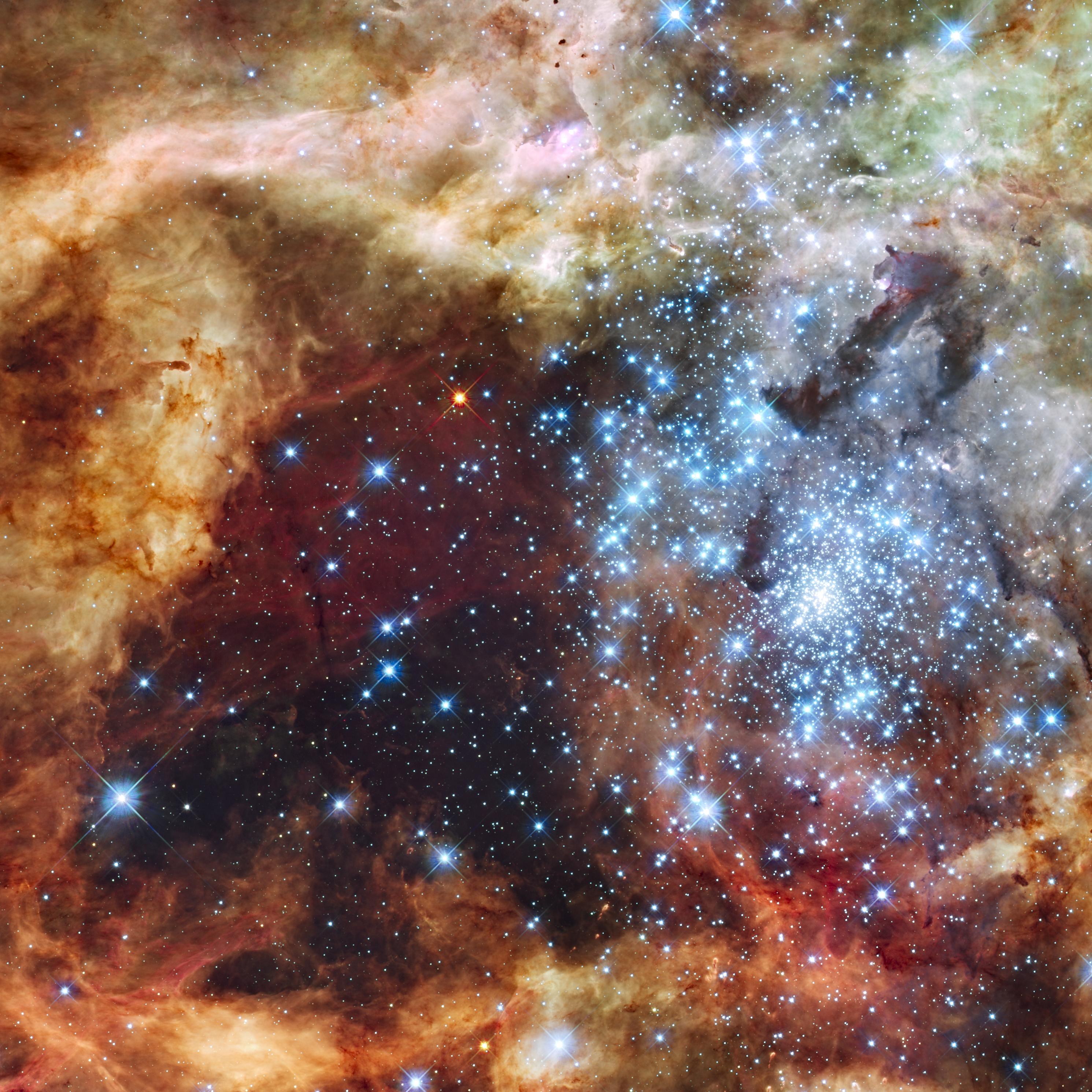
30 Doradus
Merging Star Clusters in 30 Doradus This Hubble Space Telescope image captures two clusters full of massive stars that may be in the early stages of merging. The 30 Doradus nebula, also widely known as the Tarantula Nebula, is approximately 170,000 light-years from Earth. It is part of the Large Magellanic Cloud (LMC), a galactic satellite of the Milky Way Galaxy. What at first was thought to be only one cluster in the core of this massive star-forming region has been found to be a composite of two clusters that differ in age by about one million years. The entire 30 Doradus complex has been an active star-forming region for 25 million years, and it is currently unknown how much longer this region can continue creating new stars. Smaller systems that merge into larger ones could help to explain the origin of some of the largest known star clusters. For more information, visit: hubblesite.org/contents/news-releases/2009/news-2009-32.html For Hubble's infrared view of this region, which pierces layers of gas and dust to reveal even more stars, see https://hubblesite.org/contents/media/images/2009/32/2655-Image.html?news=true
